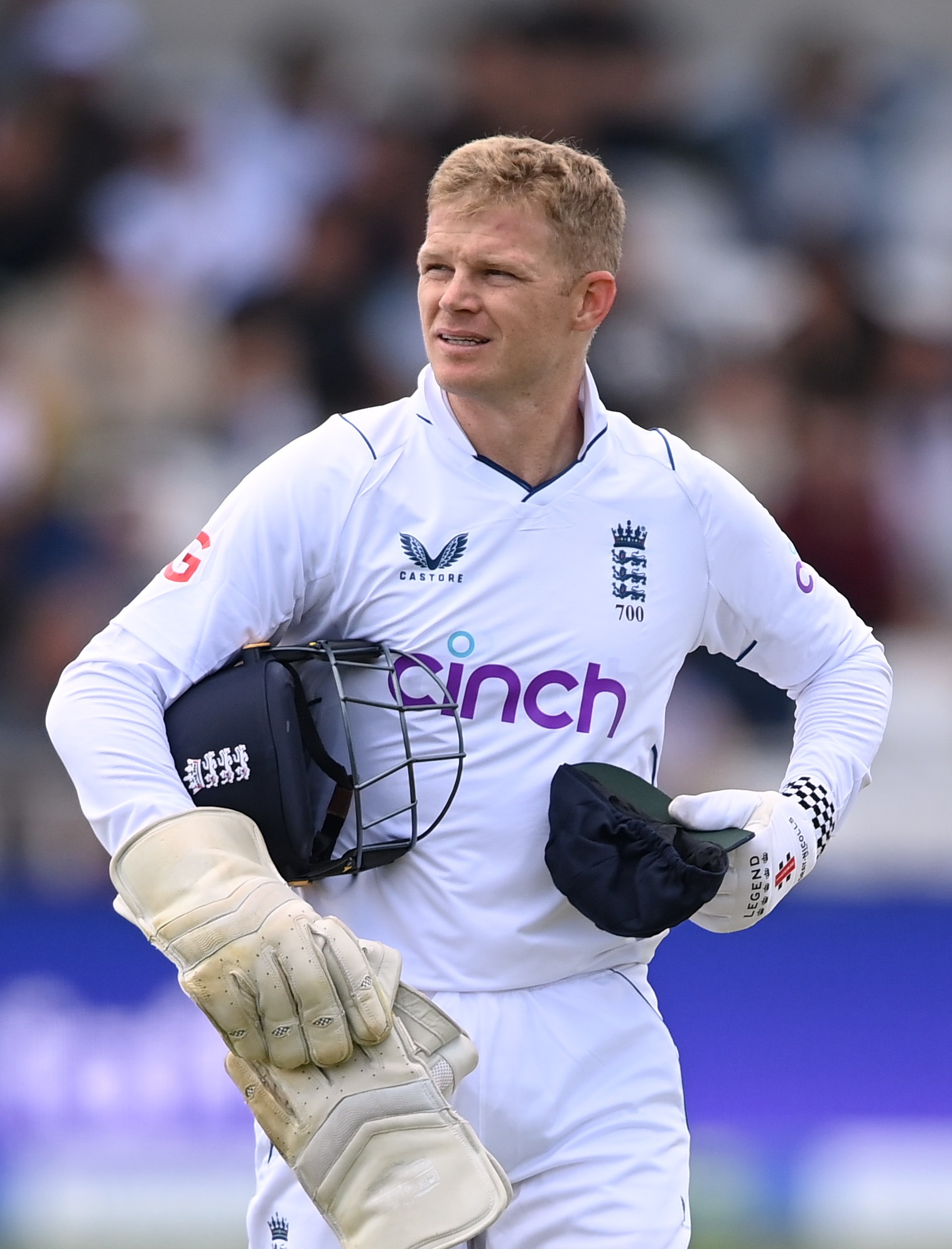SAM BILLINGS MAKES TOUGH DECISION
Former England Test cricketer Sam Billings, 32, has announced that he will no longer play red-ball cricket, opting for white-ball contracts instead. This decision comes as Billings aims to maximize his earnings and achieve a better work-life balance.
FROM TEST MATCHES TO T20 FRANCHISES
Billings, who captains Oval Invincibles in the Hundred tournament, will now focus on white-ball cricket and T20 franchises around the world. He cites the crowded cricket schedule and the need for players to make decisions based on their career aspirations as key factors in his choice.
THE END OF AN ERA
Having made his England limited-overs debut in 2015, Billings played two Tests in 2022 as a Covid substitute. Despite being seen as a possible captain, he has decided to step away from the longer format of the game to pursue opportunities in white-ball cricket.
A NEW CHAPTER
Billings expressed that he feels empowered by making a decision that aligns with his strengths and aspirations, rather than succumbing to external pressures. He looks forward to focusing on white-ball cricket and enjoying some time away from the game before returning to action in the T20 Blast.
Frequently Asked Questions
How can I find the right cricket balls?
The type of cricket you play will determine the right ball. For competitive matches, a leather ball is recommended. You might want to use a synthetic ball for training or casual play. Junior players should use a lighter ball to prevent injury. Check the league rules for details on ball specifications.
Why are there so different types of cricket grips available?
The texture, firmness and thickness of cricket grips can affect a player’s comfort and control. Different players have different preferences based on their style of play and what feels most natural in their hand. You should try several grips to find the one that suits your bat.
Can I practice cricket with a tennisball?
While a tennis ball is not recommended for formal cricket games, it can be useful for casual practice, especially for beginners or when playing in confined spaces where a hard cricket ball could cause injury or damage. This provides a safe alternative to practicing your catching and batting.
What is difference between synthetic leather cricket ball and traditional leather cricket ball?
Synthetic cricket balls are typically made of rubber, or similar materials. They are used for casual or practice games. The synthetic balls tend to be cheaper and more durable, but they don’t offer the same performance or feel as leather ones. In professional matches, traditional leather balls provide a superior and more realistic experience.
What is the difference between cricket kit bags?
Cricket kit bags range from simple duffle styles to wheeled bags and backpacks. What you decide depends on what equipment you’ll need to transport. It is easier to transport a wheeled case for players with full kits. You may find a duffle or backpack more convenient if your equipment is less or you travel frequently.
How do I know if cricket pads fit me correctly?
For protection and for mobility, it is crucial to fit cricket pads correctly. The top of the pad should reach your lower thigh. Your knee should sit comfortably in the middle of the knee-roll. Straps must fit snugly, without restricting circulation. You should be able to move freely and comfortably while wearing them.
When should I replace my cricket gear?
Examine your equipment regularly to check for signs such as wear and tear, cracks, and degradation in your bat. If you experience discomfort or performance issues, it may be time to upgrade your gear. Safety should always be prioritized over equipment longevity.
Statistics
- Around 70% of cricket-related injuries could be prevented with the proper use of protective gear.
- Studies show that players who wear thigh pads have a 25% lower risk of sustaining severe bruises or contusions.
- Nearly 50% of amateur cricketers have experienced equipment-related discomfort or injury due to improper fitting.
- Approximately 40% of cricket players have experienced slippage issues with substandard quality cricket shoes, highlighting the need for good grip features.
- Over 90% of professional batsmen prefer a bat with at least 6 to 8 straight grains for better control and durability.
- The global cricket equipment market is expected to grow by 3.3% annually from 2020 to 2024.
- On average, cricket pads have a functional lifespan of about 4 to 5 years with regular use and proper care.
- It is estimated that a well-maintained cricket bat can last for around 1000 hours of play, whereas neglected bats might last only a third of that time.
External Links
pitchvision.com
khelmart.com
kookaburra.biz
icc-cricket.com
cricketworld.com
amazon.in
cricketdirect.co.uk
- Cricket Direct Footwear
sportskeeda.com
How To
How to Choose the Right Cricket Equipment for Your Playing Style
To match your cricket gear to your style of play, you must first assess yourself. For example, aggressive batsmen may prefer heavier bats for more power while technical players could choose lighter bats for greater stroke precision. Bowlers need footwear that is sturdy and provides good ankle support. Wicketkeepers also benefit from gloves, pads and other equipment that is specifically designed. Be sure to consider your preferences and role before purchasing equipment.

